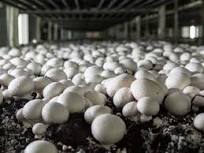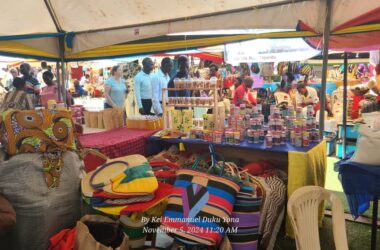By Joseph Akim Gordon
Mushroom faming is not all that popular in South Sudan, in most cases mushrooms are collected from the wild in South Sudan, people are acquainted with agricultural production, dealing with production of crops of cereal that is maize, sorghum, rice, millet and vegetable like tomato, okra, cabbage, carrot and others, and root crops like cassava, sweet potato and others.
Farmers often engaged in production of crops, are confronted by challenges that include, productive resources like certified seeds, Agricultural tools for commercial farming, such as hiring of tractors, and ox-plough that you need sufficient funding for primary and secondary cultivation.
Though the use of traditional tools like hoes are cheaper but time consuming and laborious. Other problems include, irregular rain patterns, which limits farmer’s ability to maximize production because of climate change.
Farmers need to become resilient in farming. We should not rule out to use of irrigation in our farming system to be able to produce enough for family consumption and also for the market. Given the unpredictably, the government should be thinking of constructing dams over river Nile to generate electricity and for irrigation purpose.
We have the right to use the water of Nile and other rivers to benefit our citizens. No country should prevent us to use waters of the Nile and other rivers because we deserve the right.
For this reason, we need to diversify farming system to include mushroom growing. It is small scale farming with a growing practice.
Mushroom growing is usually in a controlled indoor environment on a small plot of land, also known as “grow room”.
These Mushrooms are grown for various purposes, including personal consumption or as a small venture business and others for their medicinal benefits.
In agriculture, we are talking about seed bed, or large area where you grow your crops but in mushroom growing, the seed bed is made out of mixture of crop residues, such as cereal straw, sugar cane waste, add salt or urea, superphosphate, gypsum, supplements rice bran, wheat bran and water.
Mushroom farming in a controlled environment ensures optimum growth and yield. It’s an important industry practiced in many countries and cultivation can be done using various techniques both indoor and outdoor.
Indoor farming involves growing mushrooms in a controlled environment, while outdoor farming involves growing mushrooms in natural environments; typically consisting of growing rooms, spawn production, storage and packaging.
At every stage in of mushroom cultivation process, the environment must be carefully controlled to prevent the development of infectious diseases that inhibit growth.
Mushroom cultivation is a complex process that is affected by various factors which are crucial to understand in ensuring successful farming:
Conditions for mushroom farming
- Temperature is one of the most critical factors in mushroom farming, as it affects the growth, development, and yielding of mushroom. Optimal temperatures are also important to prevent mushroom fungus the temperature ranges 18-23 centigrade or 65-75 Fahrenheit. Temperature out sides this range can affect the growth and yield of mushroom. So always check the optimum
- PH level: Most mushrooms grow best near a neutral PH range the optimum is between 6.0 and 7.0 it can affect the growth and yield of mushroom if the PH is too low or too high, it can affect the development of your mushrooms.
- Light: unlike plants, mushrooms do not require light for photosynthesis. However, light affects the growth and yield of mushrooms, and inadequate lighting conditions can cause mushrooms to develop thin stem and small caps. Lighting is extremely important during fruiting and body initiation, but excessive light can cause mushroom to dry.
- Relative Humidity and ventilation: Mushrooms thrive in dark and humid environments, to successfully cultivate mushrooms, you should maintain an optimum air humidity of 85-95% relative humidity (RH) High humidity is crucial in ensuring proper mushroom development it also prevent drying of mushroom as it maintains the appropriate moisture content, however excessive moisture can cause substrate to become very wet, increasing mold growth.
- Carbon dioxide (C02) carbon-Dioxide is another critical factor in mushroom cultivation. The ideal Co2 concentration for mushroom cultivation is between 800-1,5000 ppm, however, different growth stages require different C02 levels. On the other hand, low levels of C02 can cause the mushroom to dry out leading to delayed sporophore formation.
- Oxygen (02) is essential element required for the survival and growth of mushrooms. Oxygen is an essential element required for the survival and growth of mushrooms. Oxygen is involved in many processes that contribute to overall development of mushrooms, mycelium uses 02 to break down nutrients and convert them into energy that is needed for growth.
mushroom cultivation is a rewarding hobby, yet it is a complex process that is affected by various factors, temperature, PH, light, humidity, carbon dioxide C02, moisture, and oxygen are critical for its cultivation, particularly at fruiting stage. Understanding these factors is crucial in ensuring successful mushroom cultivation.
Medicinal benefits
The medicinal benefit from mushroom consumption is that it reduces cases of depression, lowers the risk of cancer, it avoids premature deaths, and mushroom is dietary source of amino acid, and it improves mental health.
Preparation: mushroom is made into soup with addition of ingredients, like onion, paper, tomatoes. it is palatable and hotels in Juba do include in their menus, but in the family level mushroom is fried with some vegetables and others smoke the mushrooms and include some ingredients such as groundnut past, eaten with bread or asida or ugali, the taste is very fantastic.
Due to the high demand of mushroom in Juba, now ministry Agriculture at Central Equatoria State is already experimenting mushroom farming and it is proving popular. Demand for mushroom is now very real, given the situation that the meat price has doubled so consumers are looking for alternative.
Added to its quality and reasonable price, the customers are likely to turn to mushrooms, so hurry to start mushroom business, you will never regret but realize good profits.
Mushroom farming is cheaper, does not require large area of land and you can make it within your residential plot, provided you create cool environment with plenty of moisture.
Harvesting mushroom and selling, starts after two weeks.
The author can be reached through e-mail: akimgordon222@gmail.com



